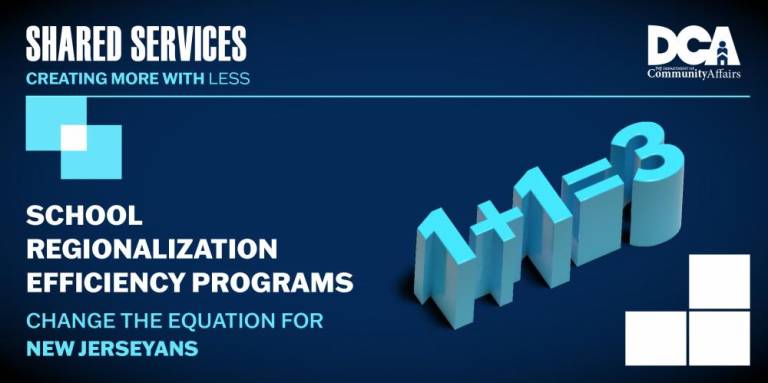Grant to fund school regionalization study
HAMBURG. The Wallkill Valley Regional Board of Education has been awarded a $123,900 grant to study the feasibility of a possible consolidation with the Franklin and Hamburg districts.

The Wallkill Valley Regional Board of Education has been awarded a $123,900 grant to explore the potential advantages of school district regionalization or consolidation.
It was one of five school districts in the state to receive a School Regionalization Efficiency Program (SREP) grant from the New Jersey Department of Community Affairs (DCA) Division of Local Government Services (DLGS).
The grants ranged from $75,000 to $135,000.
During the spring, the Wallkill Valley, Franklin and Hamburg districts agreed to study the benefits of a possible consolidation. Wallkill Valley is the lead entity in conducting the study.
Students from Franklin, Hamburg, Hardyston and Ogdensburg attend Wallkill Valley Regional High School.
David Carr, Wallkill Valley superintendent, said the state’s offer to fully fund the feasibility study was what made the idea appealing to the three districts.
They plan to hire a consultant to conduct the study within a month. A study can take from 12 to 18 months to complete.
After the districts review the study results, officials will decide how to proceed.
Carr, Franklin schools Superintendent J.R. Giacchi and Hamburg schools Superintendent Kimberly Sigman have been meeting regularly to discuss the project.
While the feasibility study will cover a number of issues, such as enrollment projections, demographics, finances and curriculum, the local districts can ask the consultant to look at specific issues, such as special education or transportation.
“The end goal is to get data so that we can maximize our resources, shared services where we can,” Giacchi said.
If school regionalization is recommended, the voters in each district would need to approve it.
Carr said any votes on regionalization are far down the road. “We’re just interested at this point in getting credible data, having a third party analyze our districts and just really look at ways that we can do a better job for our kids.”
David Astor, superintendent of the Ogdensburg district, said that school board did not choose to be part of the grant application but “we are definitely going to be part of the process.”
”We look forward to having a conversation about the pros and the cons.”
In the past, Ogdensburg school board members and the community have not supported regionalization because of concerns about local control, finances and possible realignment of schools, he said.
The board would like to see what the recommendations are before it makes a decision. “We are always willing to have a discussion about shared services or ways that we can improve our district.”
Considering regionalization
Four other local school districts are considering applying for the SREP grant.
At its Aug. 14 meeting, the Byram Township Board of Education approved a resolution for the district to participate in a study of the feasibility of regionalization with the Lenape Valley, Netcong and Stanhope school districts.
The Stanhope school board will vote on a similar resolution at its meeting Aug. 28 after discussing the topic for a few months, Superintendent Steven Hagemann said.
”I think that the majority of the board is in favor of getting the information from the feasibility study at no cost to the taxpayer,” he said.
“I think that more than anything else, they are interested in the pros and the cons to regionalization so that they can be more educated when having that discussion down the road.”
Richard Kuncken, president of the Lenape Valley Regional High School Board of Education, said it is scheduled to vote on the study resolution Aug. 27.
Netcong Superintendent Kathleen Walsh said that district’s school board approved the plan in July.
Netcong will be the lead district for the group and will work with the Steve Sweeney Center for Public Policy at Rowan University on the grant application after the boards of all four districts have voted, she said.
Only two districts are required to apply for the grant.
If the grant is approved, the Sweeney Center would conduct the feasibility study, Walsh said.
”This is just a study to see if regionalization is feasible,” she added. “It’s really gathering data.”
Law signed in 2022
The grant program was authorized in a law signed by Gov. Phil Murphy in January 2022.
Feasibility studies funded by the grant look at such factors as enrollment, facility utilization, contiguous districts with small enrollment, existing send/receive relationships, administrative staffing, class size, diversity enhancement, debt and contractual obligations, and faculty needs and attrition.
“We are excited that school districts are utilizing this grant funding to explore potential regionalization opportunities,” said DCA Commissioner Jacquelyn Suárez, who also serves as director of the DLGS.
“New Jersey public schools are ranked among the best in the nation due to their consistent and innovative delivery of high-quality academic resources and services to students. Regionalization can pave the way for new and expanded courses, extracurricular programs and enhanced facilities, all while making efficient use of taxpayer dollars. It’s a concept worth investigating, and we look forward to collaborating with the school districts as they undertake their studies.”
Acting Commissioner of Education Kevin Dehmer called the SREP “an outside-the-box approach to providing new educational opportunities in our schools as well as developing innovative ways to achieve cost savings and efficiencies, ultimately benefiting both students and taxpayers.”
“Through these grants, this double win is a significant step toward enhancing our educational system and provides practical experience for other districts that may be considering regionalization,” he added.
New Jersey has nearly 600 school districts.
Last fall, voters approved a merger of the Henry Hudson Regional, Atlantic Highlands and Highlands school districts in the first successful school regionalization in a decade.